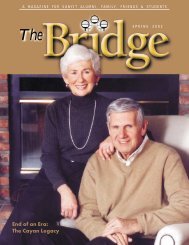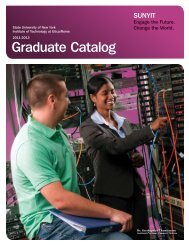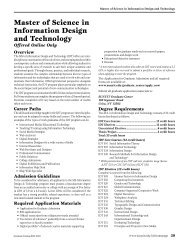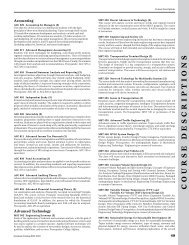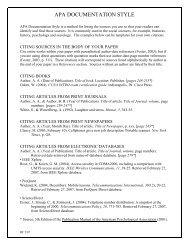Expanding the Public Sphere through Computer ... - ResearchGate
Expanding the Public Sphere through Computer ... - ResearchGate
Expanding the Public Sphere through Computer ... - ResearchGate
Create successful ePaper yourself
Turn your PDF publications into a flip-book with our unique Google optimized e-Paper software.
CHAPTER 4. ABORTION DISCOURSE IN THE PUBLIC SPHERE 60<br />
native, Protestant women encouraged virulent anti-Catholic and nativist rhetoric<br />
in efforts to persuade American legislators to pass laws that would restrict legal<br />
abortions to life-threatening circumstances” (Sitaraman 1994, 5). Thus, <strong>the</strong> tendency<br />
toward strict prohibition of abortion was, in part, predicated on maintaining<br />
<strong>the</strong> population growth of <strong>the</strong> white and Protestant class.<br />
In <strong>the</strong> second half of <strong>the</strong> criminalization period, abortion remained at most a peripheral<br />
concern to most policy makers. It was not until <strong>the</strong> 1960s that a sustained<br />
movement emerged supporting reform and/or repeal of abortion laws. The explanations<br />
for <strong>the</strong> emergence of <strong>the</strong> reform movement, and its timing, have been<br />
addressed by a number of analysts (c.f. Ginsburg 1989, Hershey 1986, Krason<br />
1984, Luker 1984, Mohr 1989, Petchesky 1984, Rossi & Sitaraman 1988, Rubin<br />
1987, Staggenborg 1991, Tatalovich 1988, Tribe 1990). One explanation, following<br />
a model first offered by Eisinger (1973), is that <strong>the</strong> “structure of political<br />
opportunities” present at <strong>the</strong> time enabled <strong>the</strong> simultaneous and independent creation<br />
of separate “micromobilization contexts” (McAdam 1988) of “insider” and<br />
“outsider” activists (Staggenborg 1991), mobilized in part by two “critical discourse<br />
moments” (Gamson & Modigliani 1989) in <strong>the</strong> early 1960s. The notion of<br />
<strong>the</strong> structure of political opportunities emphasizes <strong>the</strong> necessity of simultaneous<br />
system-level factors, such as elite opinion and elite interest, and micro-level factors,<br />
primarily ordinary citizens mobilized into social movement organizations,<br />
for political change to occur. “Micromobilization contexts” is <strong>the</strong> term associated<br />
with <strong>the</strong> informal groups into which individuals are drawn, and from which<br />
movement organizations emerge. These contexts involve ei<strong>the</strong>r people who have<br />
been actively engaged in <strong>the</strong> issue (“insider” activists), or those who are newly<br />
engaged with <strong>the</strong> issue at a political or professional level (“outsider” activists).<br />
Often, some widely-publicized event – a “critical discourse moment” – serves as<br />
a catalyst, signalling both insider and outsider activists that <strong>the</strong> grievances <strong>the</strong>y<br />
feel are not singular, and that <strong>the</strong>re is some reason to be optimistic about political<br />
change.<br />
The issue was debated with increasing frequency and urgency from <strong>the</strong> 1930s<br />
<strong>through</strong> <strong>the</strong> 1960s, first within narrow professional circles, and gradually within<br />
broader groups of activists. Out of this debate, a movement for abortion law reform<br />
slowly emerged. Tribe (1990), Krason (1984), and to a more limited extent<br />
Luker (1984) and Sitaraman (1994), focus on <strong>the</strong> leading role of powerful professional<br />
groups of doctors and lawyers in attempts to reform state abortion laws. In<br />
this view, <strong>the</strong> same medical profession that was largely responsible for creating <strong>the</strong><br />
ambiguous atmosphere concerning <strong>the</strong> conditions under which abortion was con-



